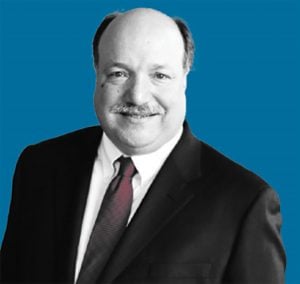 TheDOL holds plan sponsors responsible for diligently documenting howthey select and monitor each investment option. The more investmentoptions, the more likely that process will break down. (Photo:Shutterstock)
TheDOL holds plan sponsors responsible for diligently documenting howthey select and monitor each investment option. The more investmentoptions, the more likely that process will break down. (Photo:Shutterstock)
Now that all the low-hanging fruit has been picked, don't besurprised if tort attorneys start looking for other vulnerabilitiesin 401(k) plans. Like fees—the original low hanging fruit—the nexttarget has to be something easily measurable. Not just the number,but the process behind the number.
|If you recall, it wasn't the size of the fee that got plansponsors in trouble, it was the faulty process that failed tosuccessfully rid the plan of higher-priced funds.
|So, why not target the number of options on the plan'sinvestment menu? Well, not just the number of options, but theprocess behind the number.
|Related: Set-it-and-forget-it plan design could harm 401(k)investors
| Christopher Carosa,CTFA, is chief contributing editor for FiduciaryNews.com, a leadingprovider of essential news and information, blunt commentary andpractical examples for ERISA/401(k) fiduciaries, individualtrustees and professional fiduciaries.
Christopher Carosa,CTFA, is chief contributing editor for FiduciaryNews.com, a leadingprovider of essential news and information, blunt commentary andpractical examples for ERISA/401(k) fiduciaries, individualtrustees and professional fiduciaries.
First, why focus on the number of menu options? Because there'sacademic evidence to support the theory that too many choices hurtplan participants. A pair of seminal studies bookending the firstdecade of the millennium bear this out. Benartzi and Thaler's“Naïve diversification strategies in defined contribution savingplans” (American Economic Review 91 (2001), 79–98) showed employeestend to simply spread their wealth among all plan options.
|Nine years later, Iyengar and Kamenica's “Choice proliferation,simplicity seeking, and asset allocation” (Journal of PublicEconomics 94 (2010), 530–539), showed “for every 10 additionalfunds, allocation to equity funds decreases by 2.78 percent whilethe probability that an employee puts no money whatsoever in equityfunds increases by 3.15 percent.”
|There's more to the process, though. The DOL holds plan sponsorsresponsible for diligently documenting how they select and monitoreach investment option. The more investment options, the morelikely that process will break down.
|It gets worse. It's not just the process, it's the depth of theprocess. Due diligence requires plan sponsors to evaluateinvestment options in light of plan demographics. This meansmeasuring the appropriateness of every investment option for everycategory of employee. That's easy for target date funds, since thedemographic cohort is identified in the fund name. For other funds,things can get a little dicey.
|But there is a way plan sponsors can and are addressing this.It's a “tiered investment structure.” It places groups of fundsinto distinct categories. According to the Callan Institute, atiered investment structure “allows plan sponsors to build fundlineups for a heterogeneous participant base that includes'do-it-for-me' (tier 1), 'do-it-myself' (tier 2), and 'investmentsavvy' participants (tier 3).”
|A tiered investment structure offers two advantages. First, itpermits the plan to contain the same number of funds while reducing(actually narrowing) the choice. That's because the employee picksthe category first, then picks among the funds within thatgroup.
|Second, and perhaps more important, it also narrows the natureof the due diligence process for each option. A plan sponsor willonly need to address plan demographics in terms of each tier. Thatmakes the process easier to document and narrows its scope.
|Maybe that's why nearly two-thirds of all 401(k) plans alreadyfeature a tiered investment structure in their plan's menu.
|Read more:
Complete your profile to continue reading and get FREE access to BenefitsPRO, part of your ALM digital membership.
Your access to unlimited BenefitsPRO content isn’t changing.
Once you are an ALM digital member, you’ll receive:
- Critical BenefitsPRO information including cutting edge post-reform success strategies, access to educational webcasts and videos, resources from industry leaders, and informative Newsletters.
- Exclusive discounts on ALM, BenefitsPRO magazine and BenefitsPRO.com events
- Access to other award-winning ALM websites including ThinkAdvisor.com and Law.com
Already have an account? Sign In
© 2024 ALM Global, LLC, All Rights Reserved. Request academic re-use from www.copyright.com. All other uses, submit a request to [email protected]. For more information visit Asset & Logo Licensing.








